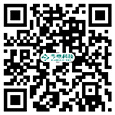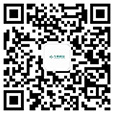Product
All categories
NR6300 Series Transformer Winding Deformation Tester
Transformer winding deformation is detected using Frequency Response Analysis (FRA) by detecting the amplitude-frequency response characteristics of each winding and comparing the results longitudinally or laterally. Differences in the amplitude-frequency response characteristics are used to judge possible winding deformation in the transformer.
Category:
Email:
Messages
Product description
Product Introduction
Using the Frequency Response Analysis (FRA) method to detect transformer winding deformation involves detecting the amplitude-frequency response characteristics of each winding in the transformer and performing longitudinal or transverse comparisons of the detected results. Based on the differences in the amplitude-frequency response characteristics, possible winding deformations in the transformer can be determined.
Main Features
◆ Acquisition and control use a high-speed, highly integrated microprocessor;
◆ USB communication interface between the PC and the instrument;
◆ The hardware core uses DDS dedicated high-speed digital frequency sweeping technology (USA). Through testing, it can accurately diagnose winding faults such as twisting, bulging, displacement, tilting, inter-turn short circuits, and inter-phase contact short circuits;
◆ High-resolution dB value measurement, dual-channel 16-bit A/D (significant output changes when changing the tap switch during field tests);
◆ The signal output amplitude can be adjusted by software, with a maximum peak amplitude of ±10V;
◆ The computer generates electronic documents (WORD) of the test results;
◆ The instrument has both linear frequency sweep measurement and segmented frequency sweep measurement dual-measurement system functions, compatible with the measurement modes of the two current technical schools in China.
Technical Parameters
◆ Signal Source: The instrument has a built-in frequency sweeping excitation signal, with a Vpp output of 10V, an output impedance of 50Ω, and a frequency range of 0.5kHz~2MHz
◆ Two acquisition channels adjust synchronous sampling channels, with a maximum sampling rate of 20Msps per channel
◆ Acquisition channel input impedance: 1M Ω/50 Ω
◆ Scan Mode: Uses linear or logarithmic frequency sweep measurement
◆ Scan Frequency Accuracy: The frequency accuracy of the signal source output signal is better than 0.01%
◆ Scan Interval: Less than 1 kHz
◆ Frequency Sweep Measurement Points: 0.5kHz~2MHz, more than 2000 measurement points
◆ Measurement Range: -100dB~20dB
◆ Measurement Accuracy: ±0.5dB (-100dB~20dB)
◆ Frequency Sweep Range: 0.5kHz~2MHz
◆ Power Supply: AC220V±10%(50Hz)
Previous page
Recommended products
SAUNDERS
If you have any suggestions or feedback on our company, please fill in the relevant information on this page and submit it. A staff member will contact you in time, or please call us directly.








